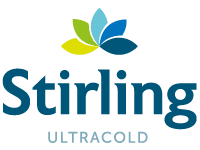
“We’re thrilled to share our new “ULTra Insights” blog with you and look forward to posting on a number of relevant subjects relating to lab energy management, sustainability, ULT technology and research freezer requirements. I’m especially excited that our very first post is about such an important topic for our industry – energy testing standards.“
For a few years now, we’ve stood by our claims of 50-60% energy savings with the free-piston Stirling engine cooled freezers, but all our competitors also claim that their ultra-low freezers are energy efficient. Laying claim to “energy efficiency” in our industry, up until recently, has always been a matter of murky interpretation. That’s because there hasn’t been an industry-wide standard for testing energy consumption of ULTs. Now we have that standard thanks to the EPA!
Why Do We Need Another EPA Standard?
If we use one method for testing our freezers’ under certain conditions and other manufacturers use different testing methods/conditions, it becomes impossible for ULT buyers to compare “apples to apples” when it comes to energy consumption of our units. To use an analogy, who’s to say that a new Toyota Prius really uses less gas than Lincoln Town Car if there is no EPA standard for testing miles per gallon? Of course there is an EPA testing standard for automobile MPGs and we don’t question which car gets better gas mileage. More importantly, we confidently know the quantitative difference in MPGs, which allows us to calculate fuel cost savings for the Prius.
Now we’re very happy to report that the EPA has collaborated with manufacturers to publish an agreed-upon industry standard for testing the energy consumption of ultra-low freezers. You can actually go to the EPA’s ENERGY STAR® website and read this published standard for yourself. This is a big deal for buyers of ultra-low freezers.
Why is a Testing Standard So Important to Ultra-Low Freezer Buyers?
Considering that current model cascade-compressor, ultra-low freezers consume the equivalent electric power of an average U.S. household; a clear metric for comparing energy consumption of models has significant financial implications for research facilities, many of which have 100s or 1000s of ULTs running 24/7. With this new testing standard, there’s a real potential for ULT buyers to compare “apples to apples” for the first time, and be better informed when assessing freezer cost of ownership, sustainability and energy management, based on meaningful data.
Stirling Ultracold Energy Consumption Test Data is Already Available, but . . .
Of course, this testing standard will only be meaningful if ultra-low freezer manufacturers publically share EPA-standard data for comparable models. That’s why we have released standardized energy consumption test results for our model SU780UE ultra-low freezer, in response to the EPA’s request for data. We recently announced this in our press release, Stirling Ultracold First to Submit Ultra-Low Freezer Test Data to the EPA. (If you would to see full documentation of our “Stirling Ultracold Model SU780UE Ultra Low Temperature Freezer Test Results”, please contact Stirling Ultracold Sales.
The release of this test data complied with the EPA-published standard final test method and indicated that the energy consumption of our upright ultra-low freezer was 7.97 kWh/day over the steady-state period of the test and 9.24 kWh/day over the complete 24-hour test.
These results have confirmed our published specs and we now look forward to settling any doubts about our stated 50-60% energy savings compared to cascade-compressor ULTs, as other manufacturers submit their own industry-standard test data. If you’re a buyer or specifier of ultra-low freezers, you should look forward to seeing their data, too.








